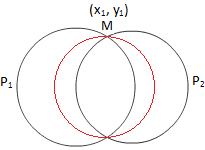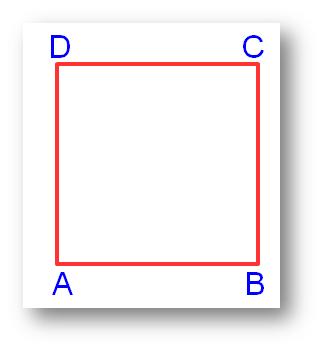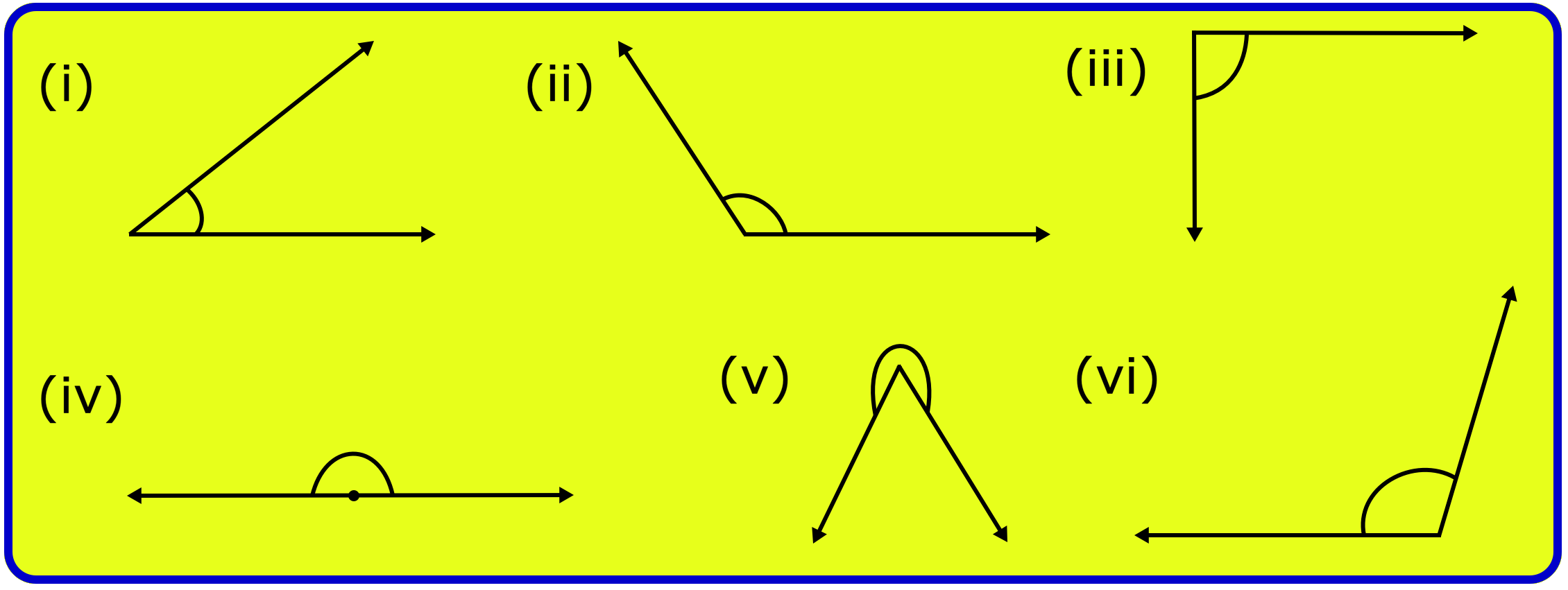Subscribe to our YouTube channel for the latest videos, updates, and tips.
Home | About Us | Contact Us | Privacy | Math Blog
Circle Through the Intersection of Two Circles
We will learn how to find the equation of a circle through the intersection of two given circles.
The equation of a family of circles passing through the intersection of the circles P1 = x2 + y2 + 2g1x + 2f1y + c1 = 0 and P2 = x2 + y2 + 2g2x + 2f2y + c2 = 0 is P1 + λP2 = 0 i.e., (x2 + y2 + 2gx1 + 2fy1 + c1) + λ(x2 + y2 + 2g2x + 2f2y + c2) = 0, where λ (≠ -1) in an arbitrary real number.
Proof:
Let the equations of the given circles be
P1 = x2 + y2 + 2g1x + 2f1y + c1 = 0 ………………………..(i) and
P2 = x2 + y2 + 2g2x + 2f2y + c2 ………………………..(ii)
Consider the equation P1 + λP2 = 0 i.e., the equation of any curve through the points of intersection of the circles (1) and (2) is
(x2 + y2 + 2g1x + 2f1y + c1) + λ(x2 + y2 + 2g2x + 2f2y + c2) = 0 ………………………..(iii)
Clearly, it represents a circle for all values of λ except λ = -1. For λ = -1 (iii) becomes a first degree equation in x, y which represents a line. In order to prove that it passes through the points of intersection of the two given circles, it is sufficient to show that their points of intersection satisfy (iii).
Let (x1, y1) be a point of intersection of the given circles.
Then,
x21+y21+2g1x1+2f1y1+c1 and x21+y21+2g2x1+2f2y1+c2
⇒ (x21+y21+2g1x1+2f1y1+c1) + λ(x21+y21+2g2x1+2f2y1+c2) = 0 + λ0 = 0
⇒ (x1, y1) lies on (iii).
Similarly, it can be proved that the second point of intersection of the given circles also satisfy (i)
Hence, (iii) gives the family of circles passing through the intersection of the given circles.
In other words, the equation of any curve through the points of intersection of the circles (i) and (ii) is
(x2 + y2 + 2g1x + 2f1y + c1) +
λ(x2 + y2 + 2g2x + 2f2y + c2)………………………..(iv)
⇒ (1 + λ)(x2 + y2) + 2(g1 + g2λ)x + 2(f1 + f2λ)y + c1 + λc2 = 0
⇒ x2 + y2 + 2 ∙ g1+g2λ1+λ x + 2 ∙ f1+f2λ1+λy + c1+c2λ1+λ = 0 ………………………..(v)
If λ ≠ - 1, then equation (v) will represent the equation of a circle. Therefore, the equation (iv) represents the family of circles through the points of intersection of the circles (1) and (2).
Solved examples to find the equations of a circle through the points of intersection of two given circles:
1. Find the equation of the circle through the intersection of the circles x2 + y2 - 8x - 2y + 7 = 0 and x2 + y2 - 4x + 10y + 8 = 0 and passes through the point (-1, -2).
Solution:
The equation of any circles passing through the intersection of the circles S1 = x2 + y2 - 8x - 2y + 7 = 0 and S2 = x2 + y2 - 4x + 10y + 8 = 0 is S1 + λS2 = 0
Therefore, the equation of the required circle is (x2 + y2 - 8x - 2y + 7) + λ(x2 + y2 - 4x + 10y + 8) = 0, where λ (≠ -1) in an arbitrary real number
This circle passes through the point (-1, -2), therefore,
(1 + λ) + 4(1 + λ) + 4(2 + λ) + 4(1 - 5λ) + 7 + 8λ = 0
⇒ 24 - 3λ = 0
⇒ λ = 8
Now putting the value of λ = 8 in the equation (x2 + y2 - 8x - 2y + 7) + λ(x2 + y2 - 4x + 10y + 8) = 0 we get the required equation as 9x2 + 9y2 – 40x + 78y + 71 = 0.
2. Find the equation of the circle through the intersection of the circles x2 + y2 - x + 7y - 3 = 0 and x2 + y2 - 5x - y + 1 = 0, having its centre on the line x + y = 0.
Solution:
x2 + y2 - x + 7y - 3 + λ(x2 + y2 - 5x - y + 1) = 0, (λ ≠1)
⇒(1 + λ) (x2 + y2) - (1 + 5λ)x + (7 - λ)y - 3 + λ = 0
⇒ x2 + y2 - 1+5λ1+λx - λ−71+λy + λ−31+λ = 0 …………….(i)
Clearly, the co-ordinates of the centre of the circle (i) are [1+5λ2(1+λ), λ−72(1+λ)] By question, this point lies on the line x + y = 0.
Therefore, 1+5λ2(1+λ) + λ−72(1+λ) = 0
⇒1 + 5λ + λ - 7 = 0
⇒ 6λ = 6
⇒ λ = 1
Therefore, the equation of the required circle is 2(x2 + y2) - 6x + 6y - 2 = 0, [putting λ = 1 in (1)]
⇒ x2 + y2 - 3x + 3y - 1 = 0.
● The Circle
- Definition of Circle
- Equation of a Circle
- General Form of the Equation of a Circle
- General Equation of Second Degree Represents a Circle
- Centre of the Circle Coincides with the Origin
- Circle Passes through the Origin
- Circle Touches x-axis
- Circle Touches y-axis
- Circle Touches both x-axis and y-axis
- Centre of the Circle on x-axis
- Centre of the Circle on y-axis
- Circle Passes through the Origin and Centre Lies on x-axis
- Circle Passes through the Origin and Centre Lies on y-axis
- Equation of a Circle when Line Segment Joining Two Given Points is a Diameter
- Equations of Concentric Circles
- Circle Passing Through Three Given Points
- Circle Through the Intersection of Two Circles
- Equation of the Common Chord of Two Circles
- Position of a Point with Respect to a Circle
- Intercepts on the Axes made by a Circle
- Circle Formulae
- Problems on Circle
11 and 12 Grade Math
From Circle through the Intersection of Two Circles to HOME PAGE
Didn't find what you were looking for? Or want to know more information about Math Only Math. Use this Google Search to find what you need.
Recent Articles
-
Quadrilaterals | Four Sided Polygon | Closed Figure | Adjoining Figure
Jul 14, 25 02:55 AM
Quadrilaterals are known as four sided polygon.What is a quadrilateral? A closed figure made of our line segments is called a quadrilateral. For example: -
Formation of Numbers | Smallest and Greatest Number| Number Formation
Jul 14, 25 01:53 AM
In formation of numbers we will learn the numbers having different numbers of digits. We know that: (i) Greatest number of one digit = 9, -
5th Grade Geometry Practice Test | Angle | Triangle | Circle |Free Ans
Jul 14, 25 01:53 AM
In 5th grade geometry practice test you will get different types of practice questions on lines, types of angle, triangles, properties of triangles, classification of triangles, construction of triang… -
5th Grade Circle Worksheet | Free Worksheet with Answer |Practice Math
Jul 11, 25 02:14 PM
In 5th Grade Circle Worksheet you will get different types of questions on parts of a circle, relation between radius and diameter, interior of a circle, exterior of a circle and construction of circl… -
Construction of a Circle | Working Rules | Step-by-step Explanation |
Jul 09, 25 01:29 AM
Construction of a Circle when the length of its Radius is given. Working Rules | Step I: Open the compass such that its pointer be put on initial point (i.e. O) of ruler / scale and the pencil-end be…






New! Comments
Have your say about what you just read! Leave me a comment in the box below. Ask a Question or Answer a Question.